Rotational Molding Design Service
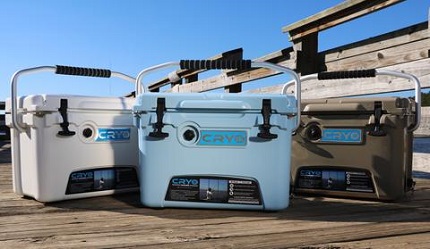 |
We design, develop & manufacture rotationally molded products for a diverse array of applications in the commercial, construction, agricultural, industrial, materials handling, marine, recreational vehicle and toy manufacturing industries. Rotational molding offers consistent wall thickness, strong and durable corners, high structural strength and extremely tight tolerances – even in complex, hollow or multi-walled products, or in parts with unusual shapes or unique configurations.
And, because rotational molding allows the molding of virtually any shape – while still maintaining tight tolerances – the most unique or complex designs can be accomplished without compromising your design vision. Rotational molding can be used for even the tiniest parts. However, rotomolding is also excellent for manufacturing large parts at a lower cost. The bigger the part, the bigger the cost savings you will experience with rotational molding.
We also offer high-intensity color blending to provide custom colors for your rotational molded part. The virtually unlimited variety of color, texture and finish options available with rotational molding can add style, visual appeal or branding opportunities to any product or part. Because the rotomolding process is more cost-effective than other molding processes, there is also less financial risk in bringing a new product to market. Because rotational molded plastic can be manufactured into virtually any shape, size or degree of complexity we can make your creative design concepts a reality when other manufacturing processes cannot.
Rotational molding design has three basic requirements. First, the plastic part must meet the application’s end-use or functional requirements. Second, the design of the part must account for any limitations that are related to materials or processing. Third, the rotomolded part must be cost-effective to produce.
For design engineers, the details of a part’s design can mean the difference between success and failure. Typically, these details include:
| a. Nominal wall thickness | e. Minimum wall separation | i. Draft angles |
| b. Wall thickness uniformity | f. Corner angle limits | j. Corner Radiuses |
| c. Varying wall thickness | g. Reinforcing ribs | k. Undercuts |
| d. Flatness considerations | h. Kiss off ribbing | l. Tolerances |
E-mail Ego's specialists today to get your project started!
Rotational molding design requires close attention to more than just functional requirements, material and processing limitations, and production costs. The details of a part’s design can make the difference between success and failure. No matter what your rotomolding application is, you’ll need to follow some best practices regarding wall thickness.
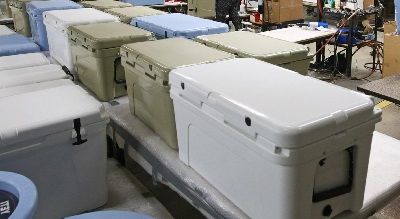 |
1. Why Wall Thickness Matters
Wall thickness is important because the wall defines the plastic part’s basic shape. In fact, the wall or frame may be the most important part detail because of its relationship to other decisions. For example, the wall thickness of a part determines the amount of material that’s required. Wall thickness also has a direct effect on part costs and cycle times.
Wall thickness affects part strength, but thicker walls aren’t the only way to design stronger plastic parts. As a rotomolding company with over 15 years of experience, Ego can provide your engineering team with advice about designing walls that offer the same or greater strength, but that use less material. To learn more about ribs, kiss-offs, and other techniques for added part strength, please contact us today!
2. Wall Thickness and Rotomolding Advantages
Compared to other manufacturing methods for plastic parts, rotational molding offers important advantages in terms of wall thickness. Specifically, rotomolding lets designers increase or decrease the thickness of the part wall after the mold has been build and sampled. Finalizing the wall thickness can even wait until after in-use testing. Other plastics manufacturing methods just don’t offer this flexibility.
Relative to their size, rotomolded parts can have thinner walls than similar parts than are produced by other plastic manufacturing methods. Unlike blow molding, a process that tends to produce thin outside corners, rotomolding tends to produce an increasing wall thickness on the outside corner of parts. In large parts especially, this added thickness and increased strength at the outside corners is an advantage.
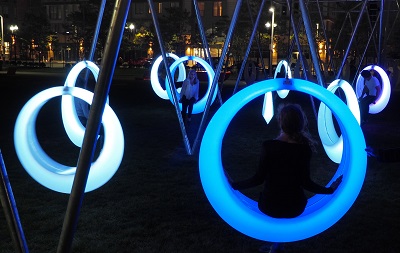 |
Rotational molding design is an essential part of rotational molding, a plastics manufacturing process for creating strong, hollow parts with features such as multiple walls, undercuts, and molded-in graphics and hardware. Applications for rotational molding services include featured products, a complex assembly which contains multiple rotomolded parts.
For part designers and engineers, an overview of rotational molding’s design requirements is the best place to start. Functional requirements, material and processing limitations, and production costs are key considerations, but designers and engineers must also follow some best practices for wall thickness. Reinforcing ribs are an important part of rotational molding design, too.
1. Reinforcing Ribs and Rotomolded Parts
Reinforcing or stiffening ribs are especially important in rotomolded plastic parts where the walls are thin relative to their size. This is often the case with rotomolded parts because designers want to keep nominal wall thickness to a minimum. There are many advantages to rotational molding, but thicker walls can increase cycle times and material costs. By adding reinforcing ribs to their designs, engineers can get strong, lightweight parts with thin walls, short molding cycles, and lower costs. It’s also possible to mold-in other structural components such as metal rods or channels for added strength.
For designers, it’s important to understand that several shallow ribs are easier to produce than a single deep rib. Because deep, narrow ribs are really closely-spaced parallel walls, these supports must not exceed the design guidelines for parallel walls. Also, unlike with injection molded or compression mold parts, the stiffening ribs for rotomolded parts are hollow instead of solid. This makes these design elements similar to vacuum formed parts, which are both hollow and lightweight.
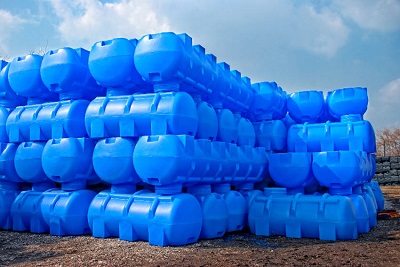 |
2. Design Guidelines for Stiffening Ribs
The depth of a rib should be at least four times the nominal wall thickness. In addition, the width of a rib should be at least five times the nominal wall. Depth controls the amount of stiffness, but increasing depth in relation to width adds complexity (and therefore cost) to the rotational molding process.
Rounded reinforcing ribs are easier to mold, but rectangular ribs provide more stiffness for the same amount of plastic that’s used. This shape-based strength differential is due to the perpendicular positioning of the rectangular rib’s depth. Finally, the side walls of a reinforcing rib need tapers to improve their mold release. We’ll return to tapers in a discussion of draft angles, the subject of a future blog entry in this series from Ego.
Get Rotational Molding Design Assistance from Ego
For over 15 years, Ego Manufacturing Group has manufactured rotationally-molded parts that are proudly Made in Shanghai China. Do you need design assistance for rotomolded parts? For more information, E-mail us!
Draft angles make it easier to remove a rotomolded part from a cavity. These tapers are measured in degrees per side and placed on the surfaces of parts that will be perpendicular to the mold’s parting line. Because different plastics have different mold shrinkage characteristics, draft angles vary by material. The inside draft and outside draft for a rotomolded part differs, too.
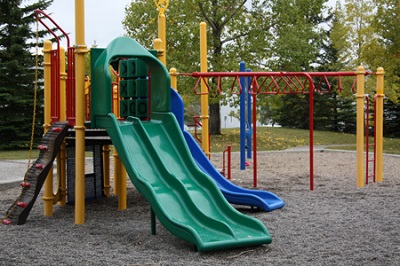 |
For part designers, specifying proper draft angles is an important consideration. Although some parts can be rotomolded straight up-and-down with no draft angle, others require a taper to support mold release. In general, draft angles should be applied to rotationally-molded parts as long as they don’t interference with the part’s functional requirements.
1. Draft Angles and Mold Release
Molded parts require sufficient cooling to regain their strength and retain their shape. Otherwise, they may not be able to withstand the forces that are applied during mold removal. With rotational molding, draft angles reduce these forces and minimize part stress and warpage. Draft angles also support reduced cooling times for faster cycles and lower manufacturing costs.
The design and manufacture of a donut-shaped part demonstrates the importance of proper draft angles. During cooling, the rotomolded part shrinks. The outer surfaces draw away from the mold cavity, but the surfaces that form the hole in the center shrink tightly onto the mold. By providing sufficient draft angle on these inside surfaces, a part designer can support easier mold removal.
2. Surface Finishes and Draft Angles
Rotational molding can produce plastic parts with smooth or textured surfaces. With smooth parts, a polished cavity that’s free of tool marks or undercuts will improve mold release. Polishing the inside surfaces of the cavity can improve demolding, but excessive polishing can increase tooling costs significantly.
Rotational molding can also produce parts with textured surfaces. To achieve this effect, the mold cavity contains the reverse details of the plastic part. This rough surface along the cavity walls makes it more difficult to remove the part from the cavity. Therefore, Ego recommends adding one additional degree per side of draft angle for each .001 textured depth.
Get Rotational Molding Design Assistance from Ego
For over 15 years, Ego Manufacturing Group has manufactured rotationally-molded parts that are proudly Made in Shanghai China. Do you need design assistance for rotomolded parts? For more information, E-mail us!
Copyright © Ego Manufacturing Group All Rights Reserved | Sitemap |